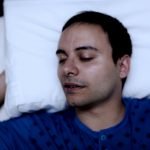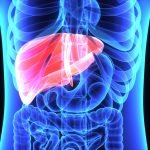Conversations about Professionalism with a Few of Our New NDs
David Schleich, PhD
We routinely conduct focus groups with recent ND graduates. There are numerous topics that emerge, and among the favorites is the “idea of a profession” as this manifests in the various stages of “regulation” such as registration, certification and licensure that manifest in different states and provinces. We also get into “scope of practice,” the notion of “controlled acts,” and the rigor and value of “board certified” specialties. Underlying these conversations that help to galvanize improvements in preparing our graduates for the complex healthcare landscape they are entering, there are frequent questions about what a “profession” is in practical and political terms. Our newest NDs are eager to get through Naturopathic Physicians Licensing Examinations (NPLEX) and to join the naturopathic profession in some form, whether it be private practice, a residency or related employment. In the focus groups, they are willing to move beyond the most common definitions.
Implicit in any of the most common descriptions we discuss are the values of integrity, obligation and trust, which are critical to any professional group for it to achieve and sustain credibility. Graduates learn that, in return for the special privileges that a demarcated profession enjoys in civil society (Fox, Freidson), medical professionals enjoy protected title, defined scope and social status, not to mention the potential of above-average secure incomes. They understand the idea of a profession as “any group sharing a special body of knowledge, standards of education and practice, and an ethical framework based on a social contract that permits self-regulation” (Pellegrino).
In any case, characterizing such professional groups is the common experience of their formal educational preparation, often including board or postgraduation examinations that act as a gateway to “enter the profession” and to establish what its members can provide to the community in terms of services. However, accompanying that familiar pathway is an obligation beyond the provision of services to the communities that enable these privileges. It is an obligation for a sustained professionalism that is not entirely self-interested.
Above all, our graduates want to join a professional community not only in which they can grow professionally but also where patients trust that the business practices, knowledge used and skills employed are safe, effective and regulated. Hafferty reminds us that accompanying this understanding of what a profession should be is a “foundation of altruism and public service.” The idea is a wonderfully inclusive and integrated body of professionals sharing the same passion and productivity in delivering and enriching healthcare in our communities; the reality is widely varying images and models of what a professional ND is or can be. The graduates in our focus groups worry about the competitive and uneven opportunities in the healthcare terrain.
In the complicated, politically charged and economically complex world of the health professional that our students join more quickly than they had expected, it has been difficult for naturopathic medicine right from the start, beginning in the days of Lust and Lindlahr and other naturopathic pioneers. They wanted to establish naturopathic medicine as a medical system to assert itself as a profession, embodying a demarcated body of knowledge, specific clinical skills and modalities on equal footing with other healthcare professionals, albeit with smaller numbers within what Baer calls the “dominative American medical hierarchy.” Within our naturopathic medical programs preparing our graduates for entry into this hostile environment, there is an ever present challenge to model the very professionalism that the founders of the medicine and its educational programs contemplated.
Relying heavily on the modeling of professional behavior, concepts, values and standards by our school faculty and on the examples provided by visiting clinicians, or through our often haphazardly administered preceptorship and residency programs, a “hidden curriculum” that scholars such as Suchman (2004) or Rothman (2000) reference invariably intersects and compromises our efforts. That hidden curriculum can teach our students that they should be afraid, that they are not equal and that the odds are stacked against them.
How did this unfriendly terrain surround and capture so much of the optimism and confidence of our graduates? There are those who would point to the weakness in our medical academic career path arrangements. Academic naturopathic medicine is not a place where financially and clinically successful NDs are rewarded for tarrying. There are no sabbatical systems, no teacher training, no consistent systems to encourage research. There are few well-designed practice management programs that reach out beyond a third- or fourth-year seminar. Professional formation gets bruised.
However, it is important to note that it is not just our curriculum shortcomings that affect the successful launch of our graduates. There is a bigger picture to contend with. For example, numerous authors in our time, beginning perhaps with Starr and later Ludmerer, reported how the social contract of medicine had been broken as hospitals, insurance companies, health maintenance organizations, and MDs whose treatment of patients had become instrumental and objectified had become money pits to be feared for more than their cost and paperwork. The social accountability of medicine to which Ludmerer referred more than once in his 1999 work, A Time to Heal, was echoed also by Reinhardt and Woollard. During this unrelenting shift toward commodified disease and acute care reaction and delivery systems, NDs have prided themselves in 90-minute intakes and an unyielding commitment to patient education and empowerment. However, they are caught up in what Saultz, citing Reinhardt, describes as “market forces [that] will never drive supply toward a demand base that cannot pay for the product without a revenue source that will at least cover the cost of care.”
Among our naturopathic medical education programs, there are leaders who are concerned that naturopathic professionalism is somewhat rudderless in terms of a coherent identity and unified therapeutic order or that the profession is lacking a national strategy to establish regulated footholds in every state. Whatever the focus of debate (for example, whether it is about the wisdom of entering more deeply into the biomedicine world or rejuvenating interest in nature cure), a sustained conversation among recent entrants into that group is normal as a profession takes form in the various jurisdictions of civil society. To cite another topic that has arisen in focus groups, some of our students debate whether or not to trust the scientific research communities that have emerged at Bastyr, National College of Natural Medicine (NCNM) and Canadian College of Naturopathic Medicine; they challenge the role of the business of health in the health professions. Overall, they are eager to establish for themselves where the naturopathic professional fits into their community. They have concerns that they have not received in their professional preparation everything they truly need for the healthcare landscape yawning before them.
Naturopathic academic medicine has not been able to mount a coordinated nationwide effort to guide our graduates confidently into their own clinics, community health centers, public health clinics or even underserved rural practices. I remind them that this very same challenge affects allopathic professional placement too, especially among recent graduates of biomedicine schools (Rosenblatt et al.). Into the crassly commodified health delivery systems of the United States, our graduates are ejected, burdened with high debt, and as Reinhard, Ludmerer and others have reminded us, are propelled into market conditions and public policy scenarios that continue to favor the now underserving biomedicine professional. They see that biomedicine professional as someone who has abandoned group large chunks of the foundational integrity, obligation and trust so central to professional identity and sustainability.
At the same time, these same conditions have for decades discriminated against NDs assembling themselves into a recognizable professional body. Not only do our graduates not have fair and equitable access, despite licensing and accredited programs, to publicly funded residency opportunities, but also they are not welcomed into federally qualified health centers or Department of Veterans Affairs hospitals, where their skills are so needed and in such short supply. The silence of our curriculum designers about these issues in the core curriculum, the preoccupation of program coordinators, and administrative leaders with increasingly voluminous content delivered traditionally in time- and place-bound formats—as well as the paucity of concerted, sustained and strategic action by the Association of Accredited Naturopathic Medical Colleges (AANMC) to address these factors—have cumulatively contributed to the hidden curriculum already referenced.
As the body focused on the academic medicine for the naturopathic profession, the AANMC has debated more than once the profession’s habit of defaulting to the idea that access to our medicine is a policy problem and not really an academic or a scholarly one. Studying policy matters such as social justice in our naturopathic history and philosophy courses is an essential intellectual priority for the profession. Unfortunately, there are few resources to address this challenge in our seven-college curricula. As Saultz suggests in his comments about professionalism issues in biomedicine, medical students and faculty simply have to know more about “cost management, improved care delivery, and the dissemination of new knowledge” (575).
Thus, it is not merely the moral dimensions issuing from our not adequately preparing our graduates for the marketplace they have to confront so soon after the exhausting process of NPLEX. Equally compelling is the obligation to communicate to them that we not only know about the problems they are facing but also are committed to addressing them.
Quite apart from the few focus groups that address these kinds of professional formation questions, the Naturopathic Medical Student Association (NMSA), a growing voice for naturopathic medical students, has been stirring its efforts around these issues and is gathering momentum not only to address the patchwork quilt of educational opportunity and professional placement but also to generate, like their American Medical Student Association colleagues, a report card on how our schools handle research integrity, for example, or how we collectively can address public policy issues. Leaders of the NMSA such as Mark Davis and Dr. Cheri King, with whom I have worked in recent years, imagine a world where, as Saultz puts it, “the public trust[s] that our standards of integrity exceeded those of the government and institutional bureaucrats assigned to watch over us” (576). The NMSA yearns for a time when transparency in accountability is a priority in our curriculum, in our teaching and evaluation standards and in self-regulation that priorizes these. To paraphrase Robert Coles, our NMSA leaders get it that, in daily classes, on the stage at the American Association of Naturopathic Physicians or before a senate committee considering licensing for NDs in Pennsylvania, we must keep a confidant eye on the essentials of integrity, obligation and trust in the processes of professional formation. Echoing the work of the NCNM board chair, Nancy Garbett, Dr. Cheri King suggested that the “product of our product” is health itself and explains that “contributing to the lifelong health of our communities, one patient at a time” is what she became an ND to do.
 David Schleich, PhD is president and CEO of NCNM, former president of Truestar Health, and former CEO and president of CCNM, where he served from 1996 to 2003. Previous posts have included appointments as vice president academic of Niagara College, and administrative and teaching positions at St. Lawrence College, Swinburne University (Australia) and the University of Alberta. His academic credentials have been earned from the University of Western Ontario (BA), the University of Alberta (MA), Queen’s University (BEd), and the University of Toronto (PhD).
David Schleich, PhD is president and CEO of NCNM, former president of Truestar Health, and former CEO and president of CCNM, where he served from 1996 to 2003. Previous posts have included appointments as vice president academic of Niagara College, and administrative and teaching positions at St. Lawrence College, Swinburne University (Australia) and the University of Alberta. His academic credentials have been earned from the University of Western Ontario (BA), the University of Alberta (MA), Queen’s University (BEd), and the University of Toronto (PhD).
References
Baer, H. A. Biomedicine and Alternative Healing Systems in America: Issues of Class, Race, Ethnicity and Gender. Madison: University of Wisconsin Press, 2001.
Baer, H. A. “The Potential Rejuvenation of American Naturopathy as a Consequence of the Holistic Health Movement.” Medical Anthropology. 13, 1992: 369-83.
Fox, Renée C. “The Education, Training and Socialization of Physicians: Medical School.” The Sociology of Medicine. Englewood Cliffs, N.J.: Prentice-Hall, 1989: chapter 3.
Freidson, Eliot. “The Changing Nature of Professional Control.” Annual Review of Sociology. 10, 1984: 1-20.
Freidson, Eliot. Profession of Medicine. New York: Dodd, Mead and Co, 1970.
Freidson, Eliot. Professional Dominance. New York: Atherton Press, 1970.
Freidson, Eliot. Professionalism Reborn: Theory, Prophecy and Policy. Chicago: University of Chicago Press, 1994: 1-10.
Freidson, Eliot. “The Reorganization of the Medical Profession.” Medical Care Review. 42 (1), 1985: 11-35.
Hafferty, F. W. “Definitions of Professionalism: A Search for Meaning and Identity.” Clinical Orthopaedics and Related Research. 449, 2006: 193-204.
Ludmerer, Kenneth M. Time to Heal: American Medical Education From the Turn of the Century to the Era of Managed Care. New York: Oxford University Press, 1999.
Pellegrino, E. “Medical Professionalism: Can It, Should It Survive?” The Journal of the American Board of Family Practice. 13, 2000: 179.
Reinhardt, U. E. “Wanted: A Clearly Articulated Social Ethic for American Health Care.” JAMA: The Journal of the American Medication Association. 278, 1997: 1446-7.
Rosenblatt, R. A., C. H. A. Andrilla, T. Curtin, and L. G. Hart. “Shortages of Medical Personnel at Community Health Centers: Implications for Planned Expansion.” JAMA: The Journal of the American Medication Association. 295, 2006: 1042-9.
Saultz, J. W. “Are We Serious About Teaching Professionalism in Medicine?” Academic Medicine, 82 (6), 2007: 574-7.
Starr, Paul. The Social Transformation of American Medicine. New York: Harper Collins, 1982.
Woollard, R. F. “Caring for a Common Future: Medical Schools’ Social Accountability.” Medical Education. 40, 2006: 301-13.









